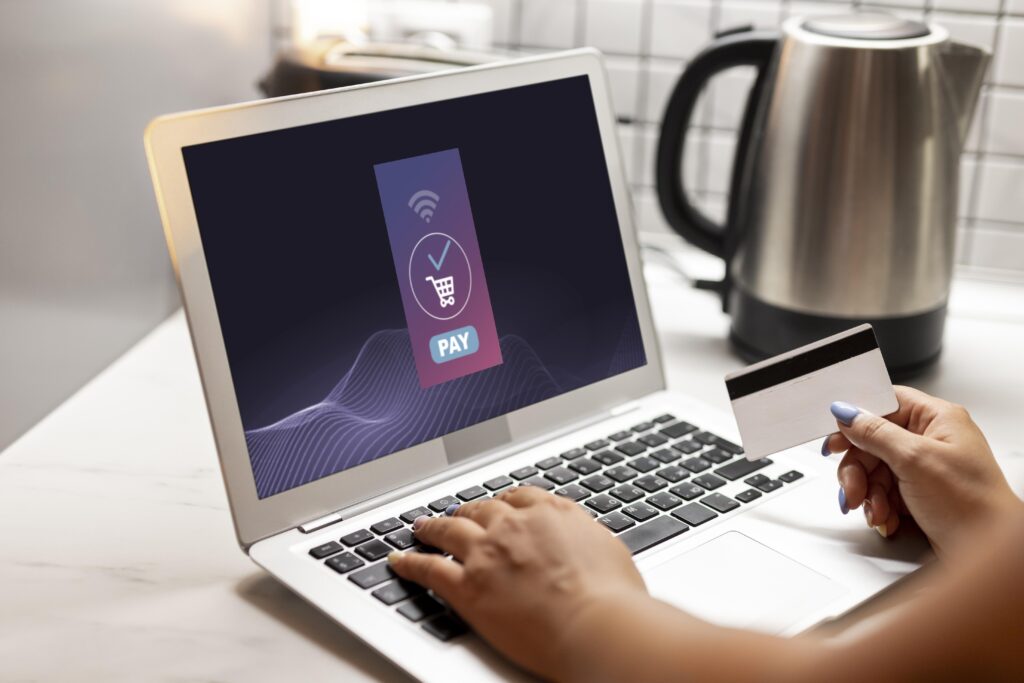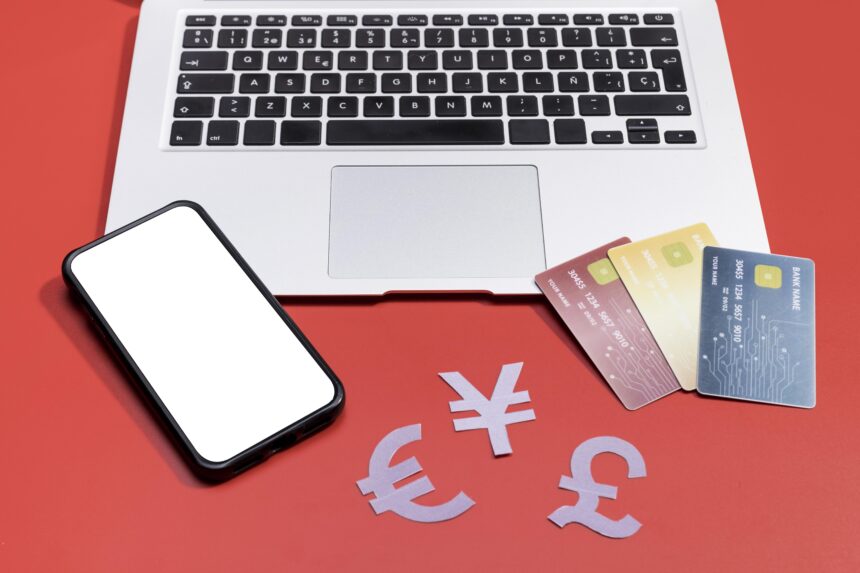Introduction: Banking Safely in the Digital Age
Online banking has revolutionized how we manage money—but cybercriminals are evolving just as fast. From sophisticated phishing scams to invisible malware attacks, your financial security is constantly at risk.
This guide provides real-world strategies to protect your accounts, covering:
✔ Latest cyber threats targeting online banking
✔ Essential security habits most users ignore
✔ How to spot scams before they strike
✔ Choosing the safest banking platforms
✔ Emergency steps if you’ve been hacked
Let’s lock down your finances—for good.
Table of Contents
Section 1: The Biggest Threats to Your Online Banking Security
- Phishing Scams (Fake Emails & Texts)
- Malware & Spyware (Silent Account Hijackers)
- Weak Passwords (Why “123456” Is a Death Sentence)
- Man-in-the-Middle Attacks (Hackers Spying on Transactions)
- Public Wi-Fi Risks (Why Free Networks Are Dangerous)
Section 2: Must-Follow Security Habits
- Creating Uncrackable Passwords (And Never Forgetting Them)
- Two-Factor Authentication (2FA) (Your Last Line of Defense)
- Why Software Updates Are Non-Negotiable
- The Truth About Banking on Public Wi-Fi
Section 3: How to Spot & Stop Banking Scams
- Fake Bank Emails & Texts (Smishing)
- Fraudulent Calls (Vishing)
- Spoofed Websites (Looks Real, Steals Everything)
- Social Engineering Tactics (How Scammers Manipulate You)
Section 4: Choosing the Most Secure Banking Platform
- Which Banks Have the Best Security?
- Encryption Standards That Actually Matter
- Real-Time Fraud Alerts (Why You Need Them)
- Customer Support Response Times (Tested)
Section 5: Mobile Banking—Safe or Risky?
- How to Download Banking Apps Safely
- Biometric Logins (Face ID & Fingerprint Security)
- The Hidden Danger of Auto-Login Features
- App Permissions You Should Never Allow
Section 6: Emergency Steps If You’re Hacked
- Step 1: Freeze Your Account Immediately
- Step 2: Contact Your Bank’s Fraud Team
- Step 3: Report to Authorities (FTC, FBI Cyber Division)
- Step 4: Monitor Your Credit for Identity Theft
Section 7: Advanced Protection Strategies
- VPNs for Banking (When You Must Use Public Wi-Fi)
- Password Managers (Never Reuse a Password Again)
- Dedicated Banking Devices (The Ultimate Security Move)
- How Often to Check for Fraud (Most Wait Too Long)
Section 8: Debunking Dangerous Banking Myths
- “Banks Always Refund Fraud Victims” (Not Guaranteed)
- “I’m Too Small to Be Targeted” (A Deadly Assumption)
- “Mobile Banking Is Less Secure Than Desktop” (Tested)
- “Antivirus Software Makes Me Invincible” (False)
Section 9: Staying Ahead of Cybercriminals
Section 1: The Biggest Threats to Online Banking
1. Phishing Scams (Fake Emails & Texts)
Cybercriminals impersonate banks with urgent messages like:
⚠ “Your account has been locked!”
⚠ “Suspicious login detected—click to verify.”
How to Spot a Scam:
✅ Check sender addresses (e.g., support@bankofarnerica.com = fake)
✅ Hover over links (don’t click!) to see the real URL
✅ Look for poor grammar & urgency (scammers rush you)
2. Malware & Spyware (Silent Account Hijackers)
- Keyloggers record every keystroke (passwords, credit cards)
- Banking Trojans redirect you to fake login pages
How They Spread:
❌ Fake app downloads
❌ Infected email attachments
❌ Malicious ads (“Your Flash Player needs updating!”)
3. Weak Passwords (A Hacker’s Dream)
- 63% of data breaches involve reused passwords (Verizon 2024)
- Hackers use “credential stuffing”—testing stolen logins everywhere
Worst Passwords of 2024 (Never Use These):
❌ 123456
❌ password
❌ qwerty

4. Man-in-the-Middle Attacks (Digital Eavesdropping)
Hackers intercept unsecured connections to steal:
- Login credentials
- Credit card numbers
- Personal ID details
5. Public Wi-Fi Risks (Why Free Networks Are Dangerous)
- Unencrypted hotspots let hackers monitor your activity
- Fake Wi-Fi networks (e.g., “Starbucks_WiFi_Free”) steal data
Safe Alternative:
✅ Use mobile data (more secure than public Wi-Fi)
✅ Always use a VPN (NordVPN, ExpressVPN)
Section 2: Essential Security Habits
1. Creating Uncrackable Passwords
✅ Use a mix of letters, numbers & symbols (e.g., T#5qP9!mW2)
✅ Try passphrases (e.g., PurpleTiger$RunsFast@2024)
✅ Never reuse passwords across sites
2. Two-Factor Authentication (2FA)
Even if hackers get your password, 2FA stops them with:
📱 Texted codes
🔐 Authentication apps (Google Authenticator, Authy)
👆 Biometric verification (Face ID, fingerprint)
3. Why Software Updates Are Critical
Updates patch security holes—enable automatic updates for:
💻 Operating systems (Windows, macOS, iOS, Android)
🌐 Browsers (Chrome, Firefox, Safari)
📱 Banking apps
4. The Truth About Banking on Public Wi-Fi
If you must bank on the go:
✅ Use a VPN (encrypts your connection)
✅ Switch to mobile data (more secure than Wi-Fi)
Section 3: Spotting & Stopping Banking Scams
1. Fake Bank Emails & Texts (Smishing)
Red Flags:
🚩 “Urgent action required!”
🚩 Links to non-HTTPS sites
🚩 Requests for Social Security or PIN numbers
What to Do:
➡ Never click links—log in via the bank’s official app/website
➡ Forward phishing emails to your bank’s fraud department
2. Fraudulent Calls (Vishing)
Scammers pretend to be bank reps, asking:
❓ “Can you verify your account number?”
❓ “We’ve detected fraud—please confirm your password.”
Defense Tactics:
➡ Hang up immediately
➡ Call your bank’s official number to verify
Section 9: Staying Ahead of Cybercriminals
Your Action Plan:
1️⃣ Audit your passwords (use a manager like Bitwarden)
2️⃣ Enable 2FA on all financial accounts
3️⃣ Bookmark your bank’s official site (avoid spoofed pages)
4️⃣ Monitor transactions weekly for unauthorized activity
Final Thought:
Online banking is convenient but risky. By adopting strong passwords, 2FA, and scam awareness, you drastically reduce fraud risks.
Stay vigilant, stay secure, and bank with confidence. 🔒
